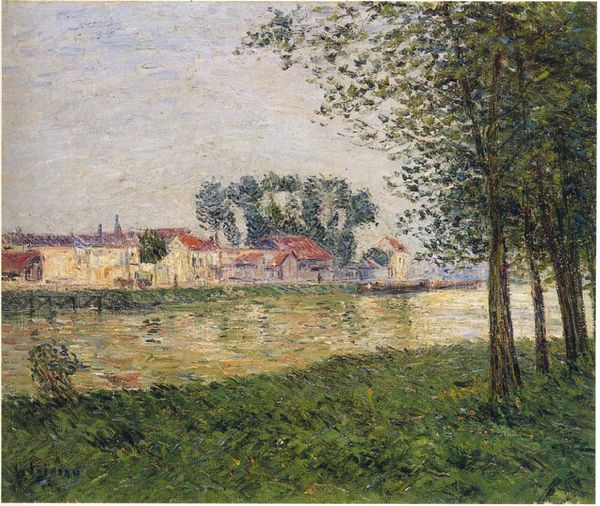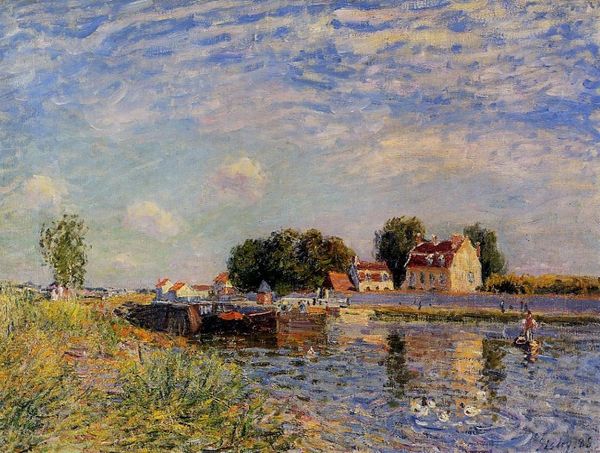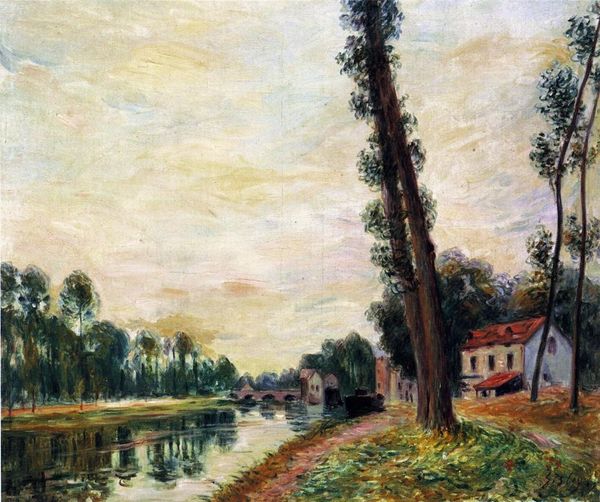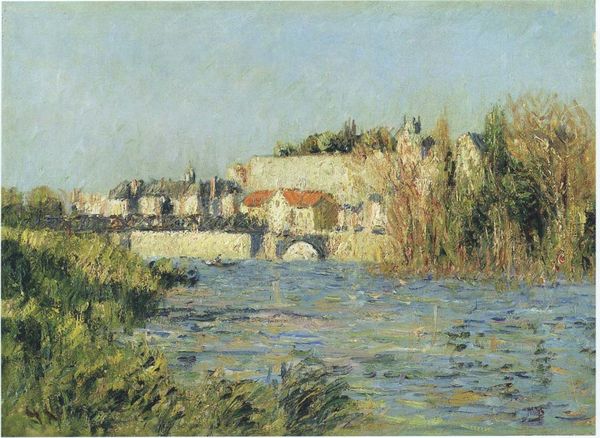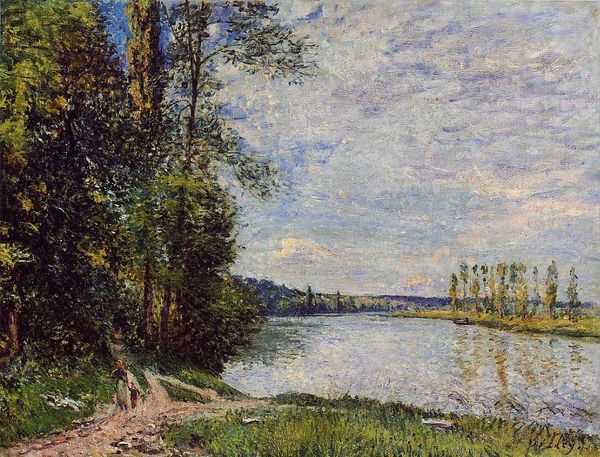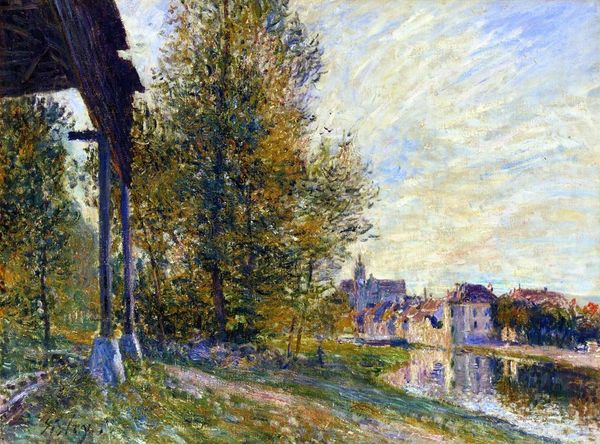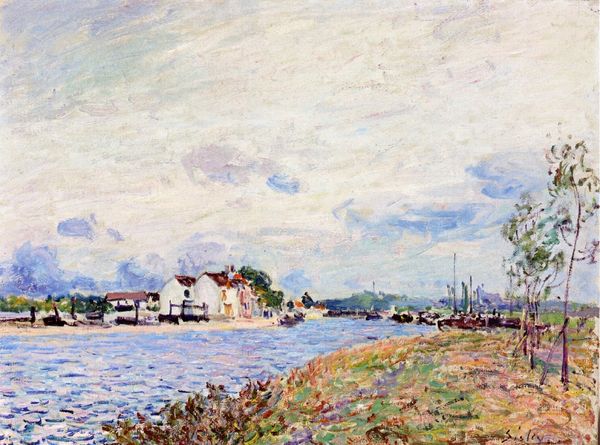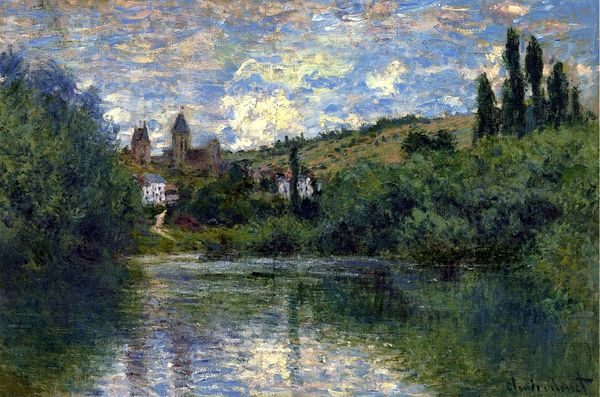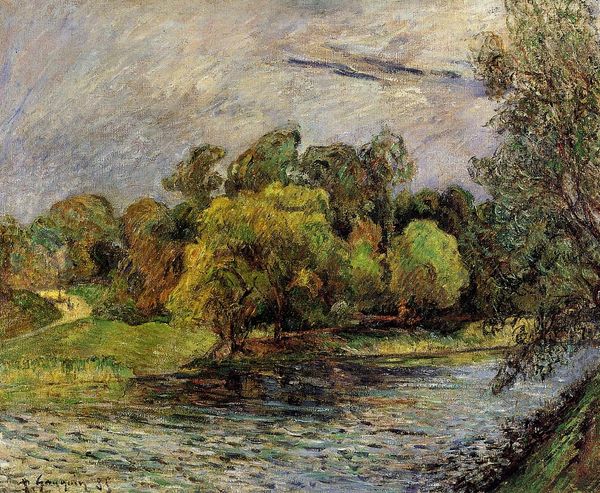
Copyright: Public domain
Curator: Maxime Maufra’s "Powdery Sunshine," painted around 1900, captures a tranquil riverside scene in oil. What are your first thoughts? Editor: I’m immediately struck by the surface texture. It's not just about what is depicted, but the thickness and visible brushstrokes of the oil paint. It looks so tactile! Curator: Absolutely. Considering that Maufra, as a key figure of the Pont-Aven School, was working within artistic circles grappling with broader socio-political movements. How do you think those factors played a role here? Editor: It is very rooted in the materiality of paint and plein-air traditions. The painting gives focus to capturing the ephemeral effects of light. Maufra grounds us in the immediate present through his attention to his media and process. Curator: Yes, the attention to light connects with its contemporaries but in the context of French colonialism, and growing industrialisation what’s deliberately absent? Is the idyllic rural and almost nostalgic setting an evasion of a quickly changing world? Editor: Perhaps, but isn’t there a valuable commentary in his very selection of tools? The labor, the craft—that becomes the commentary. Curator: That's a fair point. This wasn't mere transcription but an interpretation influenced by personal beliefs and his position. It’s about a gaze, specifically a male gaze, placed onto a land and a moment in time that carries both overt and more subtle implications. Editor: Maufra used material itself as method and that reveals meaning in its own way. I leave this today with an idea of a commentary by way of craft. Curator: I appreciate that insight into craft, and considering the artwork's positionality to broader context. I walk away seeing it slightly differently today.
Comments
No comments
Be the first to comment and join the conversation on the ultimate creative platform.
